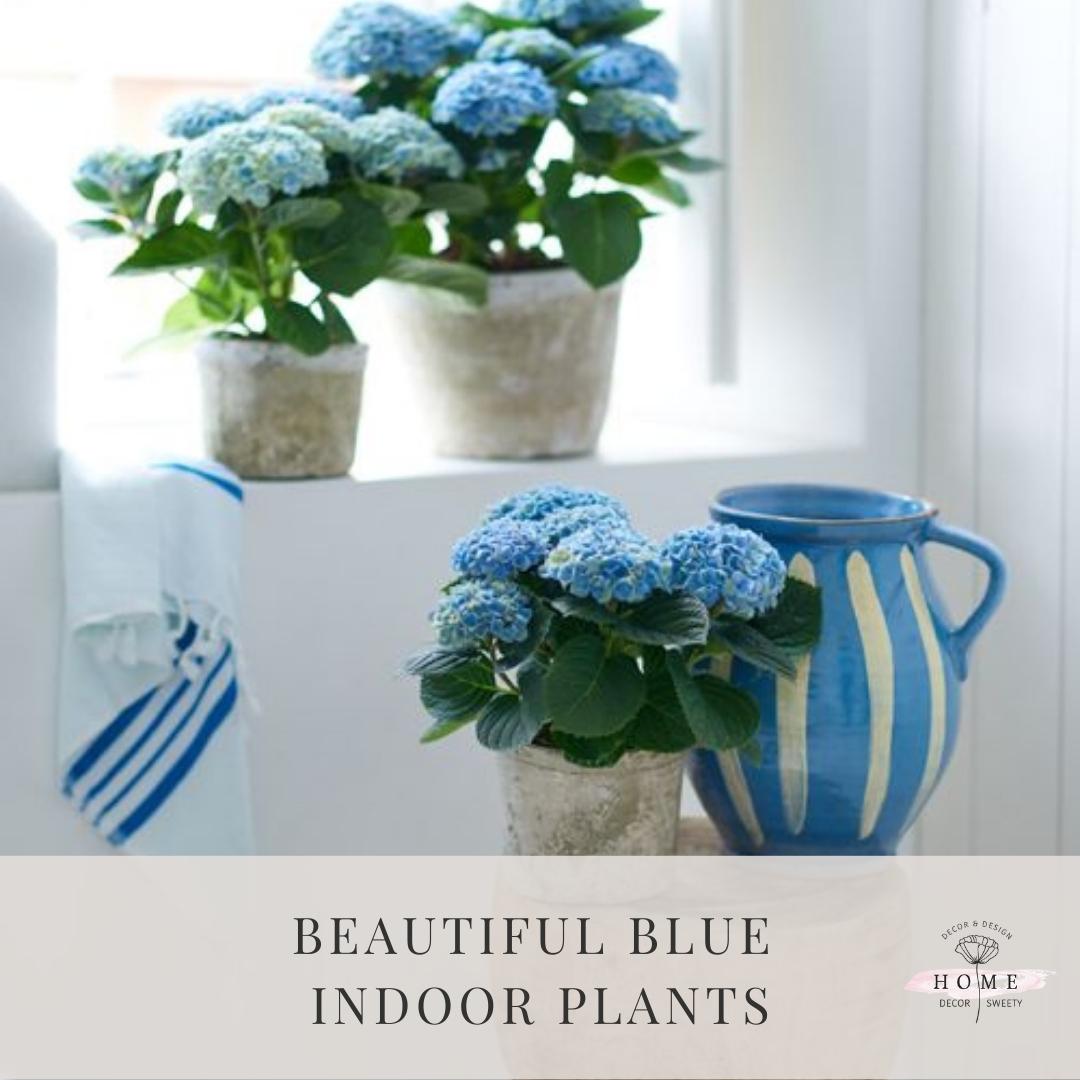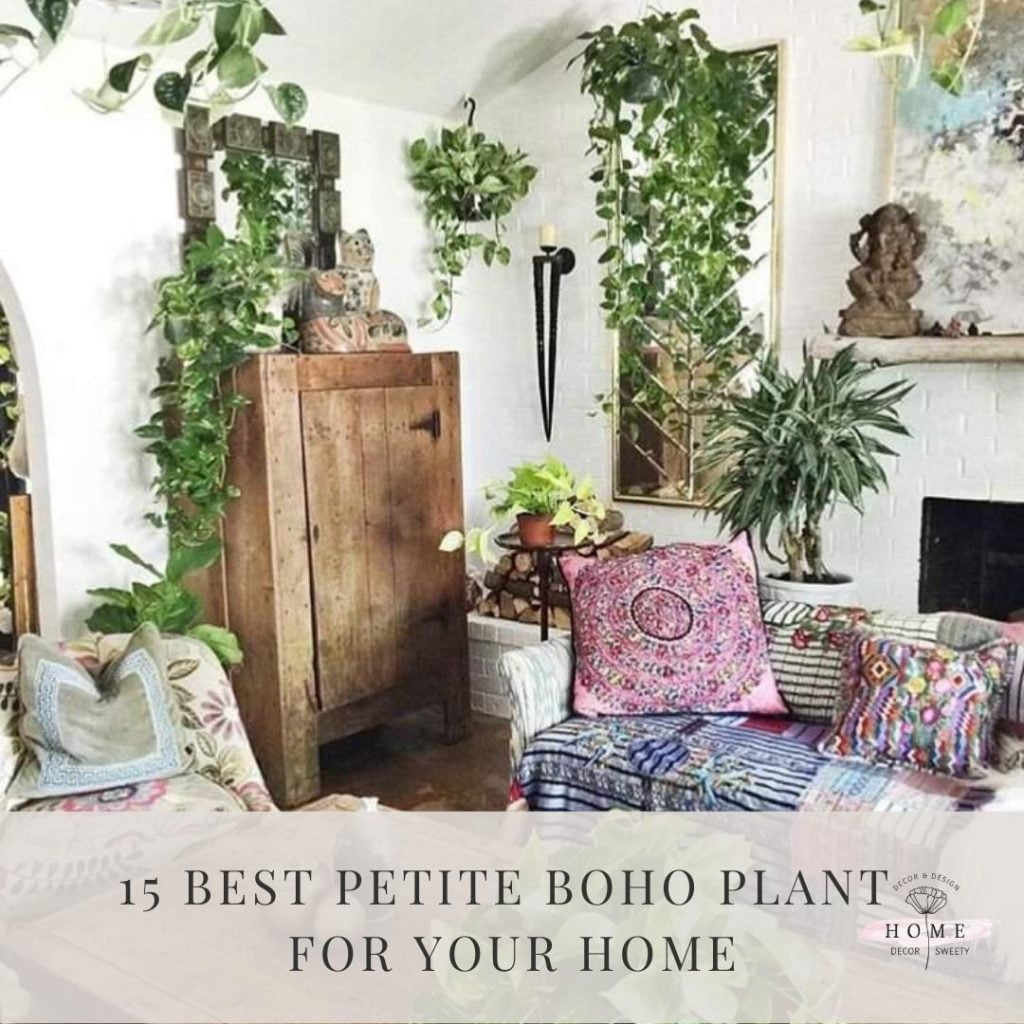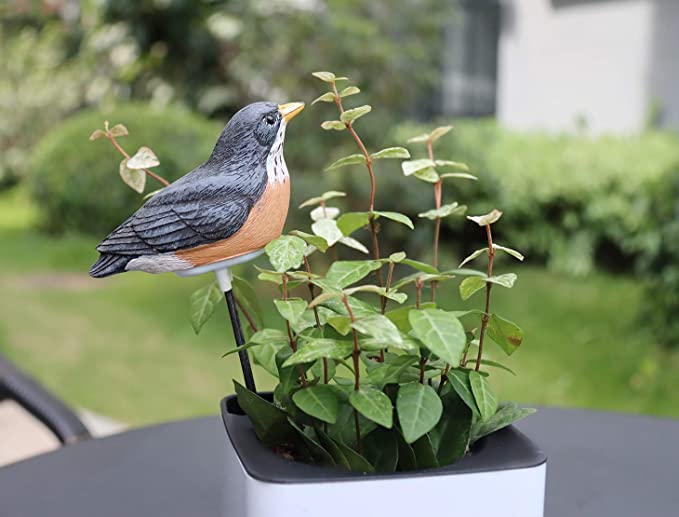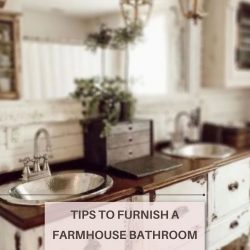Looking for a blue indoor plant that will add some pizzazz to your home décor? Consider adding one of these blue leaf indoor plants! These beautiful plants will add a touch of elegance to any room.
There are many different types of blue leaf indoor plants to choose from. Common varieties include:
- The blue sedum.
- Blue agave.
- Blue hosta plant.
- Silversword philodendron.
- Blue morning glory
- Blue Hydrangea
These plants come in various shapes and sizes, so you’re sure to find one that’s perfect for your home.
These plants are relatively easy to care for and require minimal maintenance. However, it’s essential to research the specific care requirements for each type of plant before you purchase one. This will ensure that your plant thrives in its new home.
Once you’ve found the perfect blue leaf indoor plant for your home, sit back and enjoy the beauty it brings!
Contents
Blue Agave

The blue agave is a slow-growing succulent that is best planted in the spring or early fall. It can grow to be 10 feet tall and wide, and its foliage is a blue-green color. The agave produces bell-shaped flowers that are white, yellow, or green in color. After the flowers have berry seed pods, the plant dies. The sap of the agave is toxic to both people and pets.
Care Difficulty: Easy
Sunlight: at least six hours of direct light exposure daily
Watering: Water your plant every one to two weeks in the summer when it is actively growing
Temperature : 65° – 80° F
Toxicity: Toxic
Blue Hosta
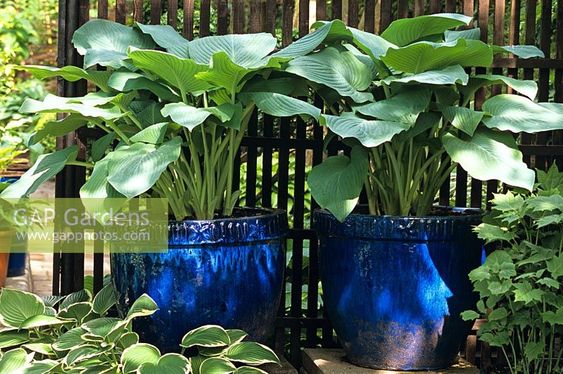
Looking for a beautiful and hardy plant to add to your home? Consider blue hosta! These plants come in a range of colors and sizes and can tolerate various conditions. They prefer moist soil and cool temperatures and can even tolerate some sun. Best of all, they are very low maintenance and easy to care for. So if you’re looking for a stunning addition to your garden that won’t require a lot of work, blue hosta is a great option!
Care Difficulty: Easy
Sunlight: Put in positions that receive some cool morning or afternoon sun
Watering: Blue hostas prefer soil that is consistently moist, but not waterlogged
Temperature : 40° – 85° F
Toxicity: Toxic to dogs, cats, and horses
Silversword philodendron
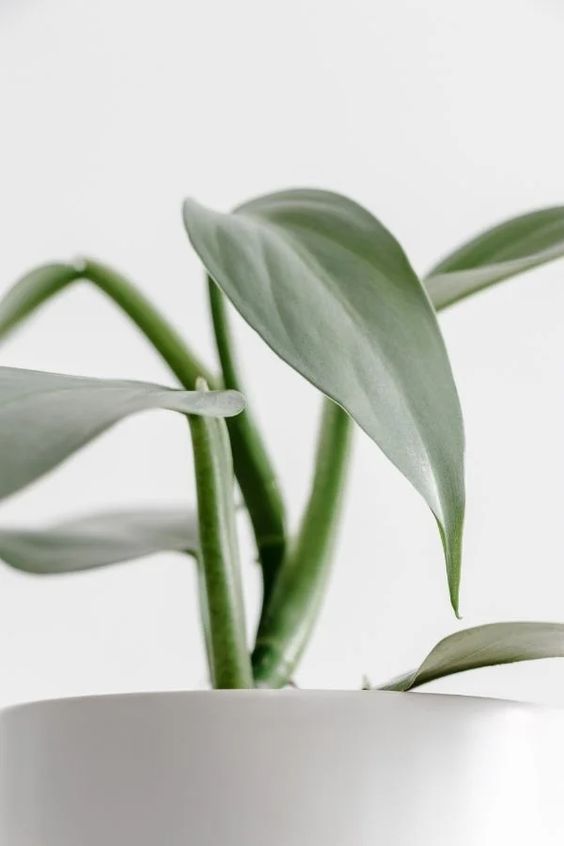
The Philodendron Silver Sword is a beautiful plant with stunning silver/blue foliage. The lance-shaped leaves are interlocking and sharp, making them a great statement piece for the home or terrarium. This plant is easy to care for and enjoys bright indirect sunlight. Water once a week and keep the temperature between 60-80°F.
Care Difficulty: Easy
Sunlight: enjoys bright indirect sunlight
Watering: watering once a week
Temperature: 60-80°F (15-26°C)
Toxicity: Toxic
blue morning glory
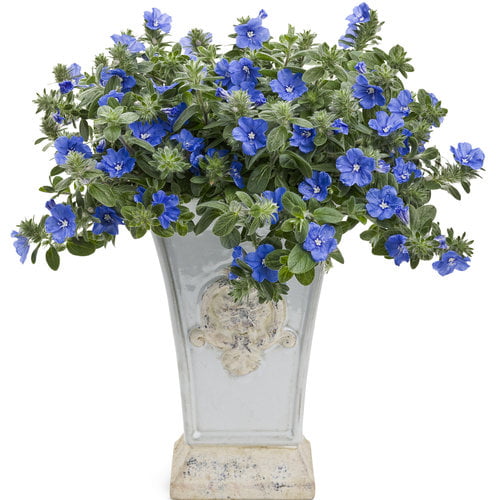
Looking for a plant that will add a splash of blue to your indoor garden? Then you may want to consider the blue morning glory. This beautiful annual vine is covered in vibrant blue flowers that will brighten up any space. And best of all, the blue morning glory is relatively easy to care for. Just be sure to give your plant plenty of sun – it will need at least six to eight hours of direct sunlight each day. Water seedlings several times a week or whenever the soil surface feels dry. The ideal temperature for blue morning glories is between 70 and 80 degrees Fahrenheit. Keep in mind that blue morning glories are toxic if ingested, so be sure to keep them out of reach of children and pets. With a little care, you can enjoy these beautiful plants in your home for years to come.
Care Difficulty: Easy
Sunlight: daily exposure to full sun (at least 6 to 8 hours a day)
Watering: You should water seedlings several times a week or whenever the soil surface feels dry
Temperature : 70° – 80° F
Toxicity: Toxic
Blue Hydrangea

Hydrangea is a beloved plant that lights up the landscape with large globes of dazzling color in spring and summer. But can hydrangea grow indoors? Can you grow hydrangea as a houseplant? The good news is that potted hydrangea plants are well-suited for indoor growing and are relatively easy to care for as long as you can satisfy the plant’s basic needs. Hydrangeas need high-quality, bright, indirect light and should be watered daily. The ideal temperature for a potted hydrangea is 50° – 60° F. One word of caution: Hydrangeas are toxic to dogs, cats, and horses. So if you have any pets, you might want to think twice before bringing a potted hydrangea into your home.
Care Difficulty: Easy
Sunlight: high-quality, bright, indirect light
Watering: require daily watering
Temperature : 50° – 60° F
Toxicity: Toxic to dogs, cats, and horses
Blue Sedum ‘Blue Pearl’
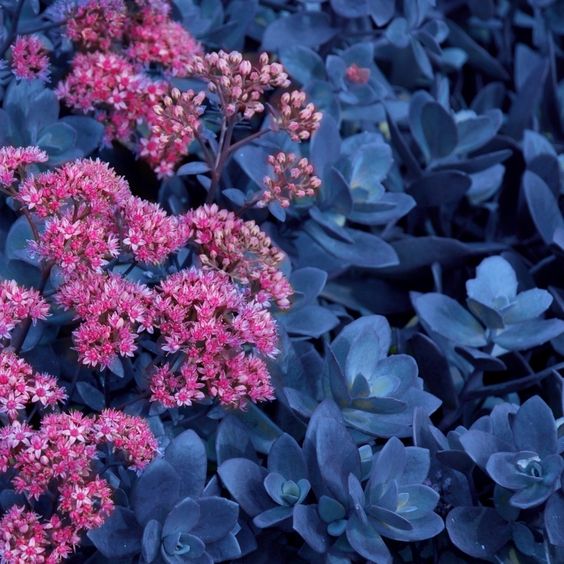
The Blue Sedum’ Blue Pearl’ is a beautiful, low-care plant perfect for adding summer and fall color to your home. This plant is drought tolerant and does well with deep, occasional watering. The Blue Sedum’ Blue Pearl’ prefers full sun and has a temperature range of 59-77°F (15-25℃). This plant is non-toxic, making it a safe addition to your home.
Care Difficulty: Easy
Sunlight: prefer full sun
Watering: is drought tolerant and does well with deep, occasional watering
Temperature: 59-77°F (15-25℃)
Toxicity: Non-Toxic
Blue Cereus
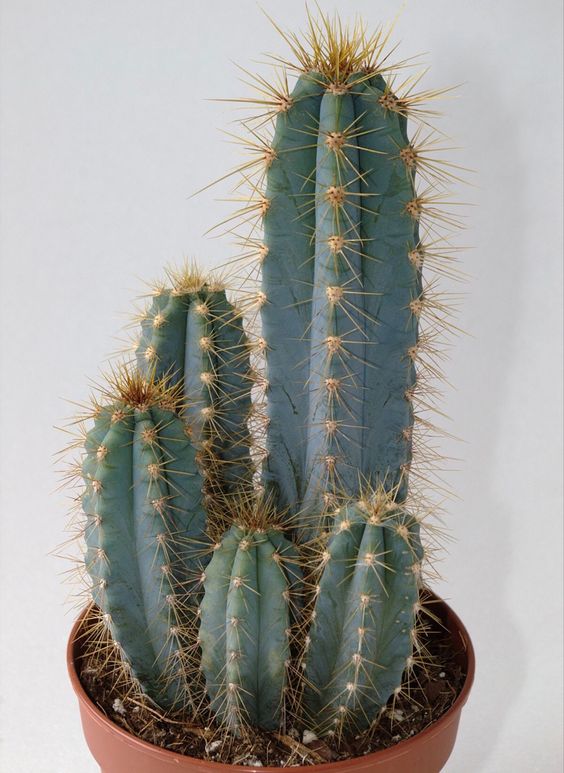
Looking for a blue indoor plant to add a splash of color to your home? The Blue Cereus is a great option! This cactus species is native to southern Peru and can grow up to 8 meters tall. It has a columnar shape and bluish color, with woolly areolas at the top. The Blue Cereus is easy to care for and is drought tolerant, making it a low-maintenance option for busy households. It prefers direct sunlight and occasional deep watering. The ideal temperature range for this plant is 70-95 degrees Fahrenheit. Blue Cereus is also non-toxic, making it a safe choice for households with pets or small children.
Care Difficulty: Easy
Sunlight: Direct sunlight
Watering: is drought tolerant and does well with deep, occasional watering
Temperature : 70° – 95° F
Toxicity: Non-Toxic
Moisture Watering Sensor
If like me you are very careless, this object is for you. This cute little bird is actually a soil moisture sensor that will notify you if there is a shortage of water or if you have too much water. When the alert is activated it will emit a bird sound and you will know what to do.
